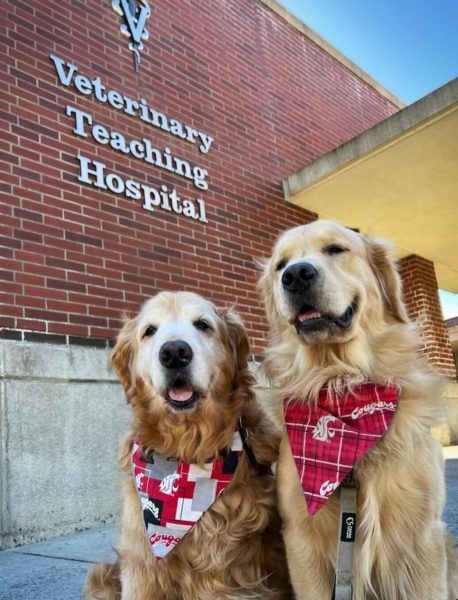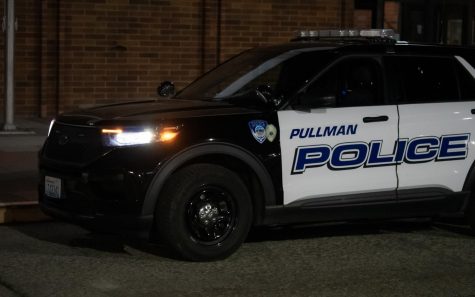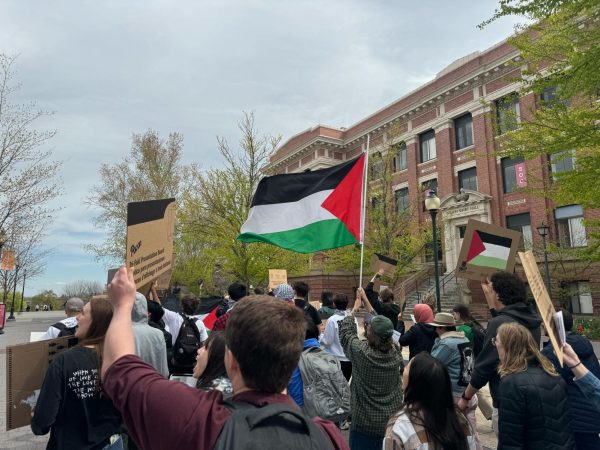Earthquake may hit northwest in near future

Diagram of the subduction of the Juan de Fuca tectonic plate. Plate activity such as this is a primary cause of earthquakes, including the one which may soon strike the Pacific Northwest.
April 25, 2016
A devastating earthquake is bound to hit the Pacific Northwest, according to an associate professor at Washington State University.
In the 1700s a massive earthquake hit what is now Washington. Catherine M. Cooper, an associate professor and geophysicist in the school of the environment at WSU, said she believes another one is on the way.
“When a large earthquake occurs along a lengthy plate boundary it is really suspicious when the area is quiet for a long period of time,” Cooper said.
Both the old and upcoming earthquakes have been dubbed Cascadia after the Cascadia subduction zone which spans from British Columbia to northern California.
A subduction zone is where tectonic plates, the pieces of the earth’s crust, meet and crash together, causing one plate to dive beneath the other and subsequently creating earthquakes.
Because the last Cascadia occurred in the 1700s, researchers have reason to believe Washington is overdue for a ground-shaking experience.
The number of earthquakes per year has increased over time, according to a table in the Statistical Abstract of the United States.
In 2012 Washington was fifth in the list of states with the most earthquake activity. In 2009 the state had an estimated total of 4,264 earthquakes of varying magnitude. In 2010 Washington had an estimated 8,444 earthquakes.
The data collected, despite spanning centuries, is still not enough to determine tectonic plate cyclicity when compared to the how old the planet is.
“There isn’t an explanation for the increase,” Cooper said. “Earthquakes don’t follow a pattern and we cannot know when the next one will be.”
The same is true for Cascadia. When the earthquake will occur is unknown, but it is expected to have a magnitude of 9.
Western Washington is located where the Juan de Fuca and the North American tectonic plates meet, meaning there are earthquakes more frequently and the chance of experiencing stronger earthquakes is higher.
The Juan de Fuca plate is slipping beneath the North American plate, building pressure that will eventually have to be released, causing an earthquake and subsequent aftershocks as the plates settle into place.
Cassie S. Geraghty, a teacher’s assistant in the WSU school of the environment, likens the event to someone jumping into bed.
“When you jump into bed, that’s the initial quake,” Geraghty said. “Then you realize your shirt is tucked under your side, making you uncomfortable. You shift around, causing additional movement, those are the aftershocks.”
Eastern Washington is in the middle of a tectonic plate, so earthquakes are rarer.
Earthquakes can occur in the middle of a plate, but only near faults. A fracture is a crack in the ground, and movement along a fracture makes it a fault, Geraghty said.
There are few faults in eastern Washington; one of the closest faults to Pullman is actually near Challis, Idaho.
Although Cascadia would originate in western Washington it would be felt across the state.
“We would most likely feel it in Pullman,” Cooper said. “Who knows how much damage it would cause?”
Western Washington would experience mass transportation issues and a disconnect in communication, separating the west side from the east side of the state.
Other issues include landslides, fires caused by broken gas lines and water shortages caused by breaks in water lines. Another major concern about earthquakes is the likelihood of tsunamis.
“If there’s a tsunami, everything left of Interstate 5 would probably be destroyed,” Cooper said. “You can prepare for an earthquake, but getting to high ground is about all you can do if there is a giant wave coming for you.”
She suggested everyone have an earthquake kit including food and water supplies, a first aid kit, and a battery-operated radio.
When the earthquake itself is happening, the most important thing to remember is to protect your head. Most deaths caused by earthquakes are the result of structures collapsing and crushing people, said Cooper.
Cascadia is not a matter of if, but when.
“In the meantime, the best advice I can give to anyone is to get prepared,” Cooper said.



















